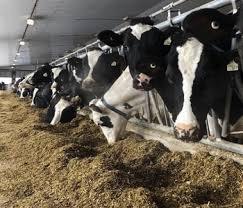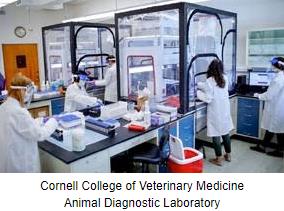 Dr. Diego Diel, Director of the Virology Laboratory at the Animal Health Diagnostic Center at the Cornell University College of Veterinary Medicine, will undertake molecular and epidemiologic studies on emerging Bovine Influenza-H5N1. He noted, “We will study how HPAI spilled over into dairy cows to understand why these outbreaks happened.” He added, “There are a number of very important questions about its source and the risk of transmission to other animals and humans that need to be addressed. It is noted that diagnosticians at the Cornell Diagnostic Center identified H5N1 influenza virus in specimens submitted from an affected herd in Texas. The Center was prompted to examine for avian influenza virus following reports that dead grackles and sick cats accompanied the outbreak of the then undiagnosed condition in dairy cows characterized by an acute decline in milk yield, anorexia and mild respiratory signs.
Dr. Diego Diel, Director of the Virology Laboratory at the Animal Health Diagnostic Center at the Cornell University College of Veterinary Medicine, will undertake molecular and epidemiologic studies on emerging Bovine Influenza-H5N1. He noted, “We will study how HPAI spilled over into dairy cows to understand why these outbreaks happened.” He added, “There are a number of very important questions about its source and the risk of transmission to other animals and humans that need to be addressed. It is noted that diagnosticians at the Cornell Diagnostic Center identified H5N1 influenza virus in specimens submitted from an affected herd in Texas. The Center was prompted to examine for avian influenza virus following reports that dead grackles and sick cats accompanied the outbreak of the then undiagnosed condition in dairy cows characterized by an acute decline in milk yield, anorexia and mild respiratory signs.
Dr. Louise Moncia of the University of Pennsylvania School of Veterinary Medicine noted that sequencing of the genome of the diary cow isolates confirmed sequences corresponding to isolates from wild birds in the vicinity of the index farm. The gene sequences of the isolates from a Minnesota goat herd diagnosed in late March were similar to an isolate from pheasants in Colorado.
Based on the single case of human infection resulting in conjunctivitis, the Centers for Disease Control and Prevention are actively investigating characteristics of the virus with specific interest in possible changes in genes among avian and ruminant H5N1viruses with respect to the human isolate. According to a CDC release, a change in PB2 E67K was present and associated with adaptation of the avian precursor to mammalian hosts. Even though changes have occurred in this genetic marker, there is no evidence of the potential to infect humans and with a high probability that human-to-human transmission will not occur.

Epidemiologists have noted that the single patient who worked on the affected dairy farm showed only mild conjunctivitis. This could mean that in the future infections might not be recognized and will not be diagnosed providing an opportunity for the virus to adapt to humans. The University of Minnesota is urging dairy farmers to apply common sense precautions to prevent exposure including the use of protective personal equipment for workers in contact with milking cows, raw milk and calves. The University Moos Room Podcast urged farmers to report illness among themselves and their workers, especially those not conversant in English to detect any possible cases of transmission from herds.
On a more optimistic note, scientists at the CDC noted correspondence between the hemagglutinin gene from the virus isolated from the patient with two candidate vaccine viruses that could be used to produce a specific vaccine. The neuraminidase gene of the isolate from the human case was devoid of resistance markers that will allow antiviral drugs including oseltamivir to be administered as an effective therapeutic agent.